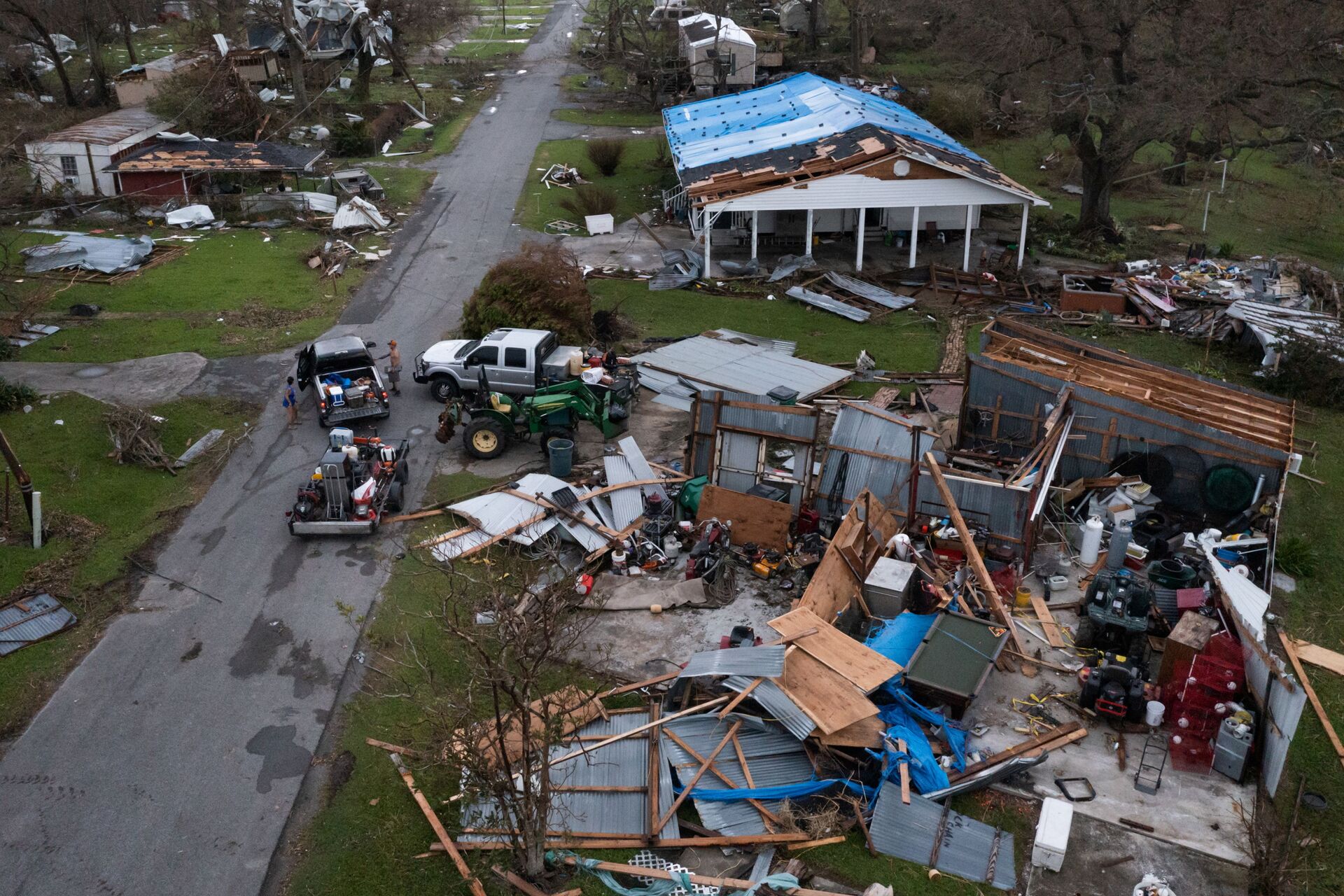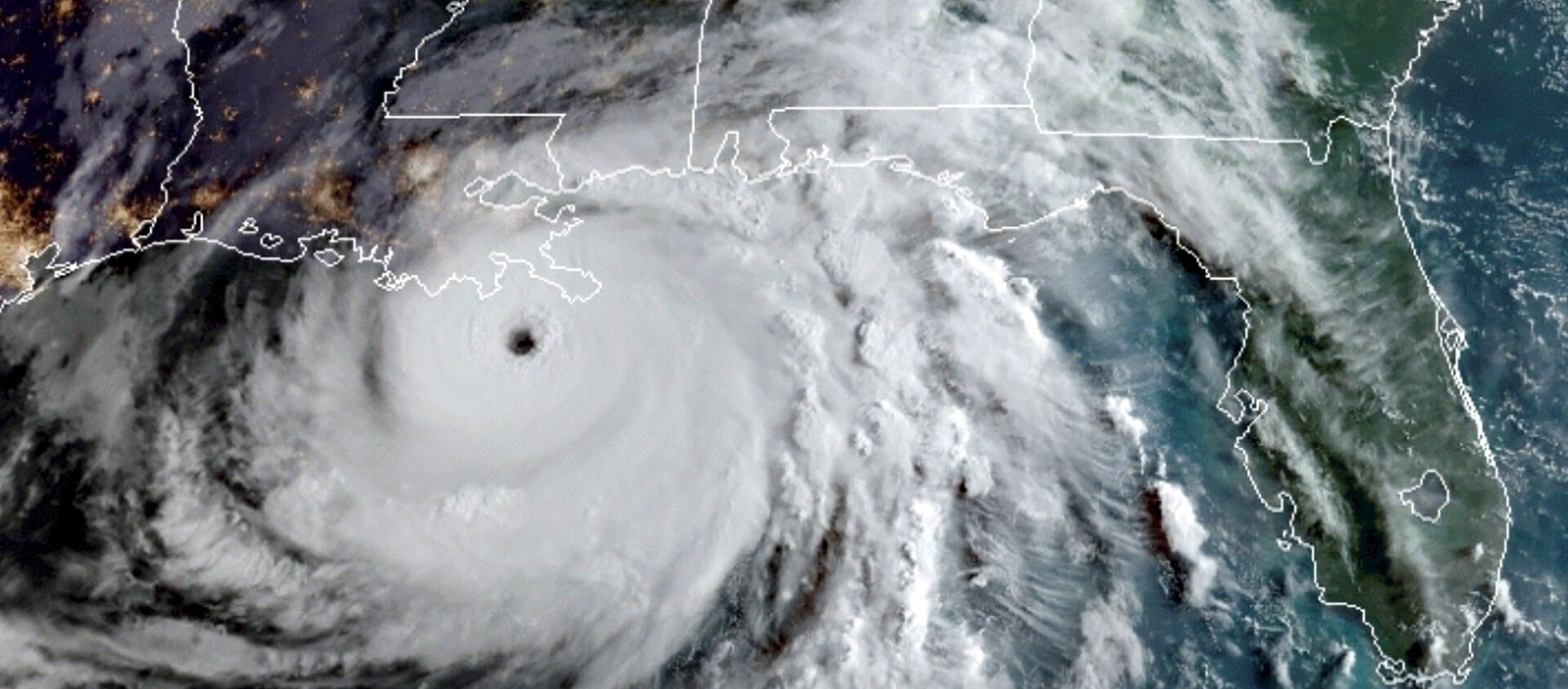Hundreds of Thousands Remain Without Power in Louisiana Week After Disastrous Hurricane Ida
04:00 GMT 06.09.2021 (Updated: 09:39 GMT 17.09.2023)
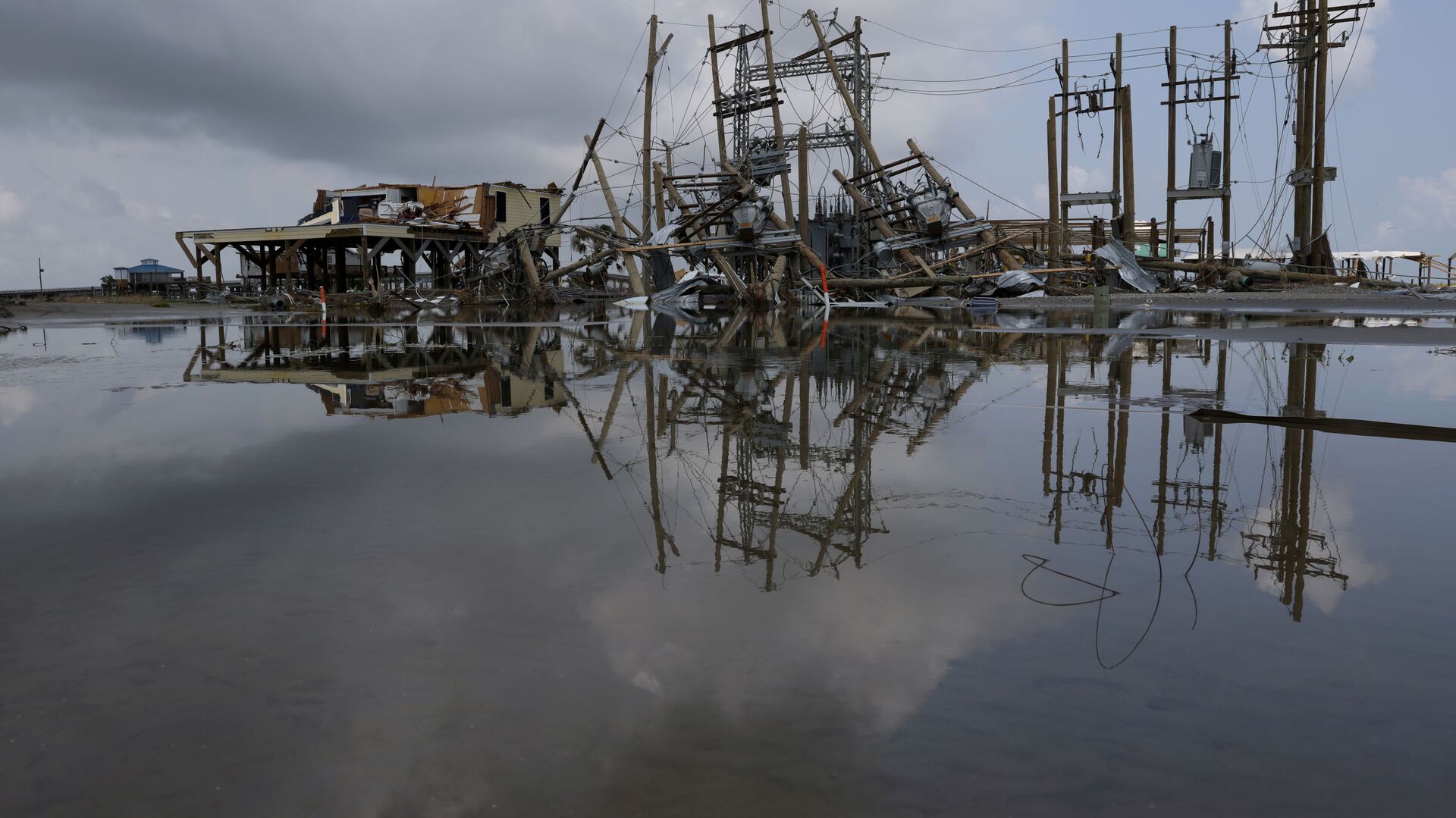
© REUTERS / Leah Millis
Subscribe
Devastating Category 4 Hurricane Ida hit Louisiana on August 29 and gradually weakened on its way to the northeast. But even the weakened cyclone brought heavy rains and flooding to the northeastern region this week, claiming the lives of at least 50 people, per the latest data.
A week after the second-most destructive hurricane in the history of the US southern state, hundreds of thousands of Louisiana citizens are seeking shelter from the searing heat and ongoing lack of power.
More than a million people were without power in Louisiana along the hurricane's route at peak intensity. Throughout the southeastern part of the state, there was widespread heavy infrastructure damage, and particularly heavy flooding in coastal districts.
According to the authorities, the levees in New Orleans were unaffected, but electricity lines were severely damaged throughout the city.
As of Sunday evening, over 557,000 houses and businesses in Louisiana were without power as a result of downed power lines, according to tallies provided by PowerOutage. Long lines at gas stations and charity distribution sites are still forming residents are looking to obtain emergency supplies and seek refuge in the disaster's aftermath.
According to CNN, New Orleans authorities on Saturday launched a shuttle service for citizens without electricity who choose to leave, transporting them by charter bus from the city convention center to powered shelters in northern Louisiana and Texas.
Entergy Louisiana, which serves over 1 million people in the state with electricity, reportedly estimated that the majority of its customers will have power restored only by Wednesday next week. The media noted that many gas stations are still closed or out of service, and those that are open have lines of people waiting for hours.
With many desiring gas to fill up their cars, residents are opting to drive out of the area in search of the liquid gold. Others have utilized their cars as air-conditioned rest stops, whereas some lucky folks have tapped the use of generators to keep the lights on.
The latest estimates reveal that Ida has caused the death of at least 13 people and destroying infrastructure in Louisiana and Mississippi.
According to GasBuddy, the majority of gas stations in Baton Rouge and New Orleans were out of gas as of Saturday morning. Similarly, over half of the gas stations in Lafayette were out of gas, as well.
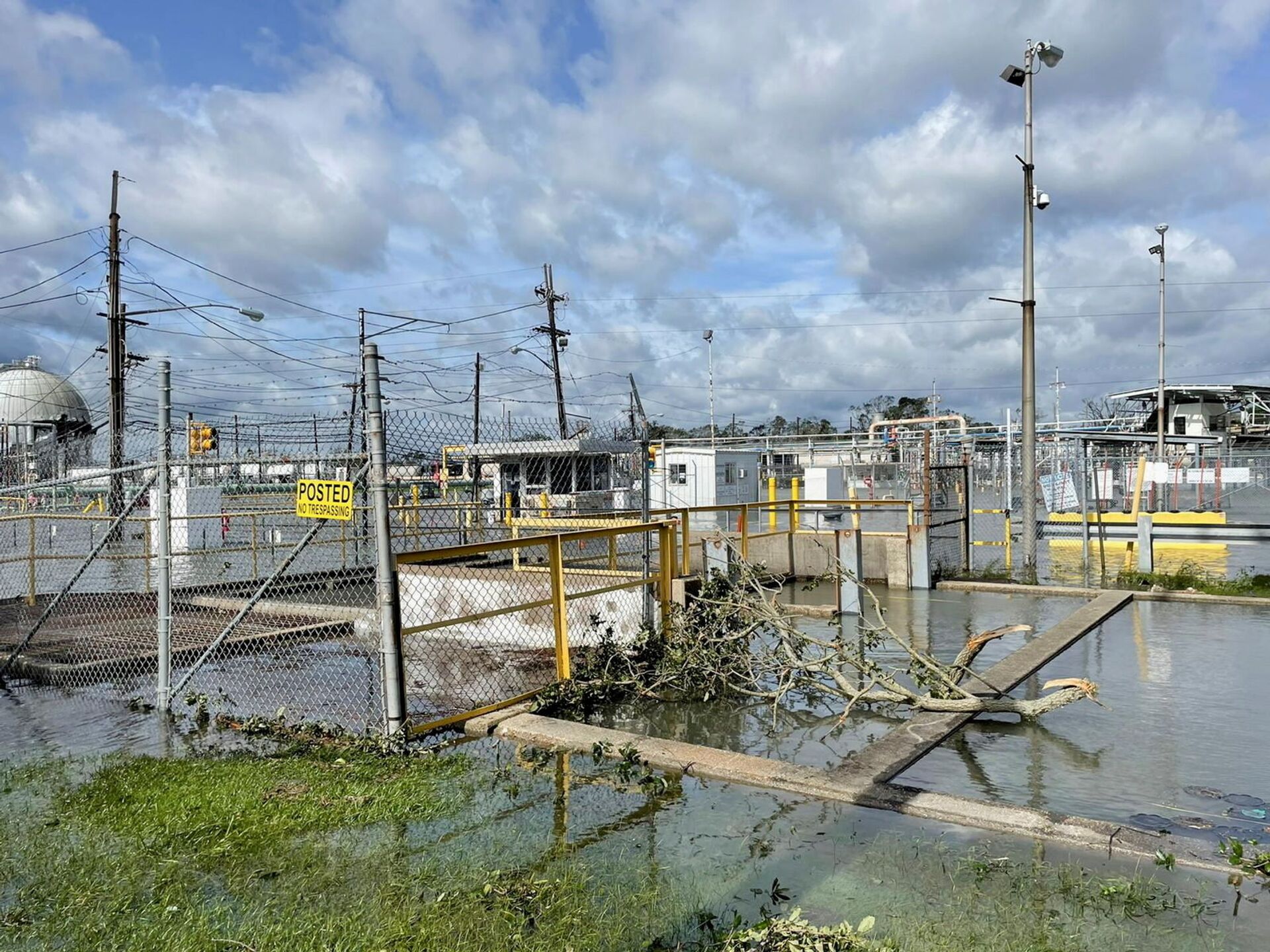
The Shell Norco manufacturing facility is flooded after Hurricane Ida pummeled Norco, Louisiana, U.S., August 30, 2021.
© REUTERS / DEVIKA KRISHNA KUMAR
Meanwhile, US President Joe Biden went to Louisiana on Friday to assess the damage caused by Hurricane Ida, acknowledging residents' dissatisfaction with the slow pace of power restoration and promising federal assistance. He pledged to "have [peoples'] backs until this gets done."
The Biden administration said on Thursday afternoon that it would release 1.5 million barrels of crude oil from the US emergency stockpile in the hopes of alleviating gas shortages.
Earlier in the week, the US Energy Department stated that Hurricane Ida shut down offshore oil and natural gas facilities in the Gulf of Mexico, resulting in a 95% drop in oil production and a roughly comparable drop in natural gas production.
Animal Rescuers Transfer Louisiana Pets to DC to Ensure Lives of Others
On Wednesday, a Michigan-based nonprofit animal rescue group brought 134 house pets, namely dogs and cats, from the overburdened shelters in Louisiana to Washington, DC, in order to provide more sheltering space in the affected state for pets, whose owners were themselves relocated to shelters far away from homes, The Washington Post reported.
The animals were rescued from five Louisiana shelters that were at capacity, and rescuers stated that by moving them, those facilities were able to take in more pets who may have been lost or forced to go there temporarily while their owners evacuated or treated in hospitals in the aftermath of Hurricane Ida.
According to the report, many shelters in the US South are overcrowded.
One of the main reasons for that is that some shelters have seen an increase in their pet population over the previous year and a half of the pandemic, as owners have been forced to give up their pets for a variety of reasons, ranging from financial difficulties to job shifts or health concerns. Other shelters have long struggled with overcrowding due to a lack of significant state-level initiatives encouraging pet owners to spay and neuter their animals.
The newspaper noted that over the past year there has been a boom in what animal experts have nicknamed "pandemic pet" adoptions in the Washington, DC, region and other parts of the country, as groups have relocated animals from overcrowded shelters in the South to more urban areas like Washington and found them new homes.
Death Toll Expected to Increase Significantly
Overall, on Sunday, the death toll from Hurricane Ida continued to increase, with many states in the Northeast reporting high fatality cases as a result of severe floodwaters.
As the storm weakened from the sustained winds of 240 kph (150 mph) in Louisiana to a post-tropical cyclone as it traveled north, it still caused flash floods along the East Coast, killing at least 50 more people, according to Reuters' Sunday report. The tally is expected to grow further.
New York Governor Kathy Hochul said during a Sunday briefing that Ida's record-breaking rainfall of 7.8 cm (3.1 in) per hour, recorded in Central Park in New York City on Wednesday, brought walls of water pouring into businesses, public transportation systems, and 1,200 residences, costing more than $50 million in damage.
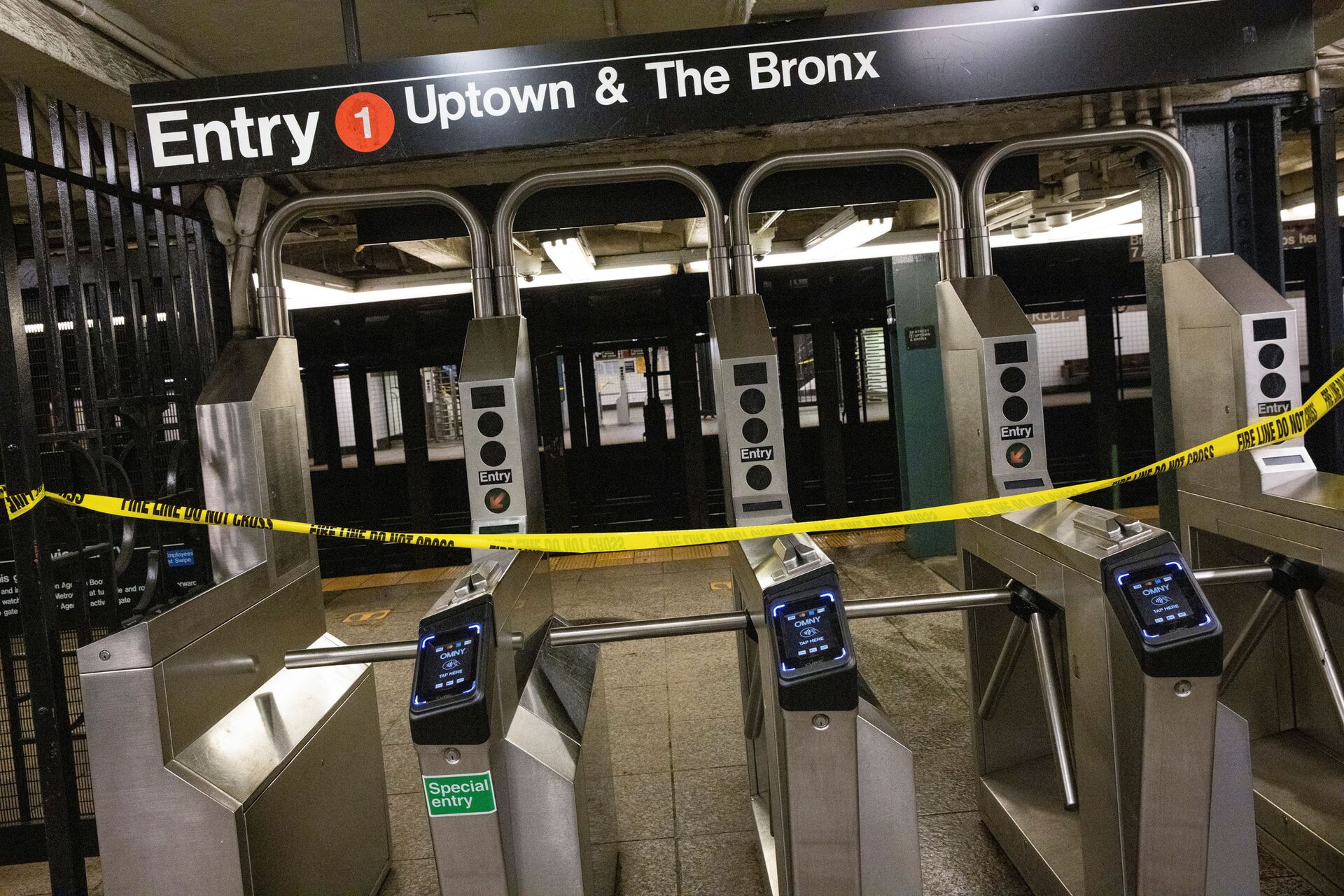
Tape warns commuters not to enter a closed subway station at 28th street, which was heavily flooded when the remnants of Tropical Storm Ida brought drenching rain and the threat of flash floods to parts of the northern mid-Atlantic, in New York City, U.S., September 2, 2021.
© REUTERS / CAITLIN OCHS
The governor had earlier obtained Biden's emergency disaster proclamation, and signed paperwork on Sunday requesting federal funds to cover the costs of temporary lodging, as well as home reconstruction, presumably in less flood-prone areas.
"New Yorkers are still recovering from the damage across our downstate communities, and this request I signed and submitted to President Biden can secure the financial resources that are due to New Yorkers who suffered unimaginable devastation as a result of the storm," Hochul said.
According to the Reuters' report, there were 17 confirmed deaths in New York, four in suburban Westchester County and the rest in New York City, where nearly all of the victims were trapped in illegal basement apartments, which are among the last remaining affordable options for low-income residents in the area.
There were 27 verified hurricane deaths in New Jersey, with four persons still missing.
Ida was the sixth-costliest tropical cyclone on record, according to this week's estimates by the US media, causing around $50 billion in damages, with $18 billion in insured losses in Louisiana. The hurricane has also likely become the cause of the massive oil spill in the Gulf of Mexico, which was still being taken care of as of Sunday.

